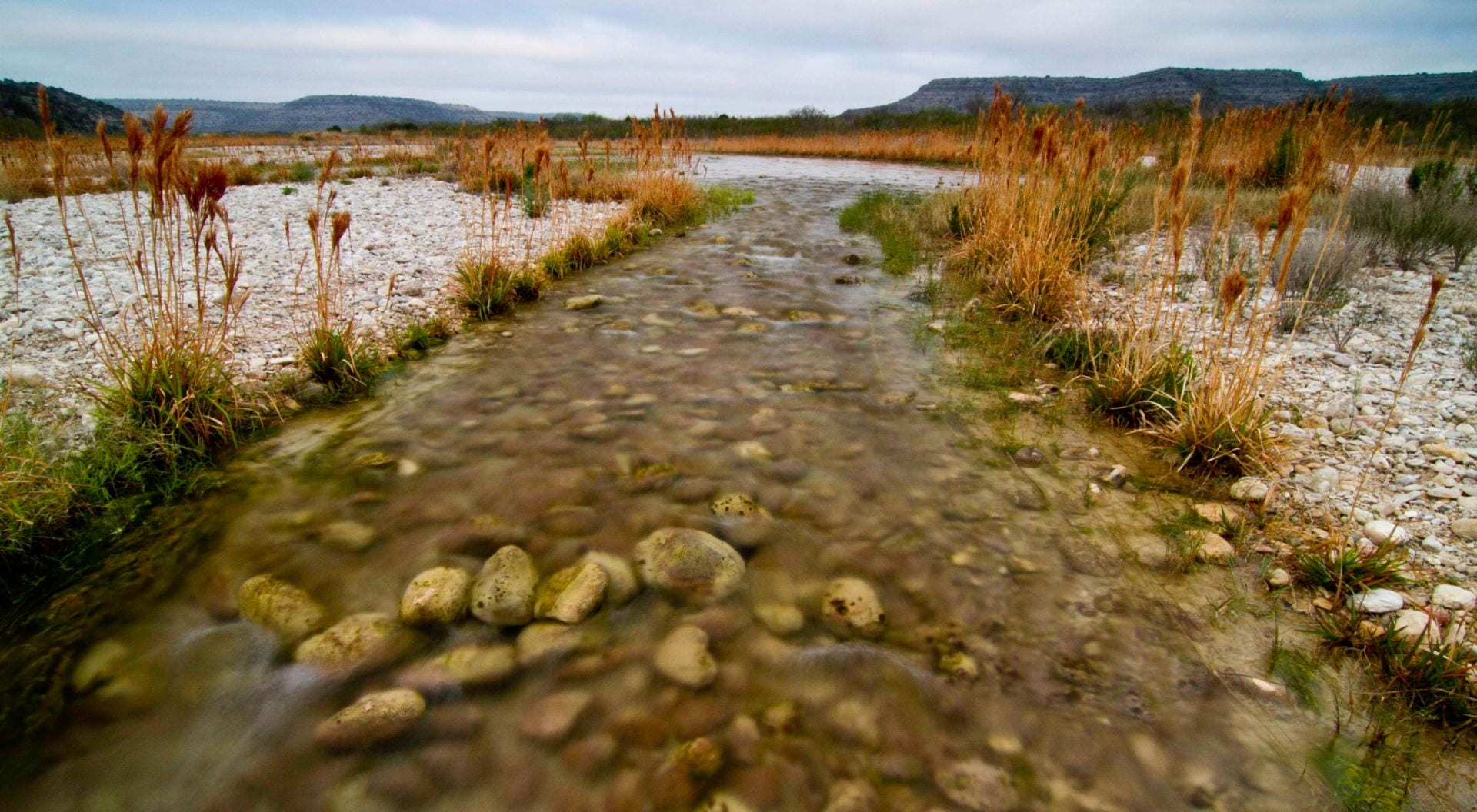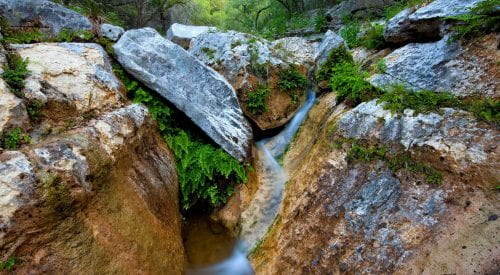State Director of The Nature Conservancy in Texas
In this issue’s Q&A, Texas+Water Editor-in-Chief, Dr. Todd Votteler, interviews Suzanne Scott, State Director of The Nature Conservancy in Texas.
As State Director for The Nature Conservancy in Texas, Scott establishes conservation strategy and public policy leadership to protect the state’s cherished landscapes and support ecology, economy, public health, and equity. Working closely with a talented and diverse staff, she oversees the execution of landscape-scale conservation efforts, freshwater protection initiatives, and critical marine protection measures in the Gulf of Mexico, as well as the development of sound science and policy solutions to address climate change.
Scott has dedicated a significant portion of her life to protecting and restoring the environment, connecting communities with the natural resources around them and spearheading on-the-ground projects that support social, environmental, and economic values. Prior to joining TNC in November 2020, Scott spent more than two decades with the San Antonio River Authority and was appointed its General Manager in 2007. There, she steadfastly elevated the agency’s crucial role and impact and implemented more than $600 million in highly visible projects, including work on the Museum Reach and Mission Reach of the San Antonio River Improvements Project and San Pedro Creek Culture Park. She also guided the development of successful programs to improve flood protection, water quality, habitat, nature-based recreation, and access to the river and its tributaries. A regional leader on water, Scott chaired the South Central Texas Regional Water Planning Group and the Guadalupe and San Antonio Rivers Bay and Basin Area Stakeholder Group. Most recently, she was chosen to lead the first Interregional Planning Council, created by the Texas Water Development Board. She also serves as Vice Chair of the Regional Flood Planning Group for the San Antonio River Basin.
What are The Nature Conservancy’s goals and priorities in Texas?
The Nature Conservancy in Texas has been working to address the state’s most urgent environmental challenges for over 50 years. We’ve protected just shy of one million acres of Lone Star land and 200 miles of its rivers and streams to date, and as we consider the next 50 years and beyond, we’re committed to continuing our efforts to shape the science, solutions, and policies that will help make our state healthier and more resilient for all Texans.
As Texas landowners ourselves, we understand the pivotal role that working lands play in our state’s economy and heritage. Together with private landowners and other partners around the state, we are collaborating around creative solutions to Texas’ greatest conservation needs. Our focus is on safeguarding our lands, waters, and Gulf Coast while tackling the growing impacts of climate change. In our view, if we can get it right in Texas, we can get it right anywhere. And Texans love the state’s incredible natural landscapes—this work is truly collective. We do it for the love of Texas, our planet, and our future. We believe that the future can be a bright one.

Kayaking along the Blanco River in Texas Hill Country. © Christopher Zebo
As someone with extensive experience in the Texas water space, what does your appointment as State Director say about the organization’s priorities moving forward?
This is really about the connectivity of all our work rather than land versus water as a priority. Impacts from one project literally flow—pun intended—to another. Moreover, the latest conservation science is telling us that biodiversity is on the move as climate change alters their habitats, and that protecting and restoring a network of connected lands and waters is critical to providing a literal and figurative pathway forward. In response, our strategies and solutions have to achieve a greater scale than ever before—and that’s why TNC is approaching our water challenges by tackling entire watersheds.
We’re proactively looking at watershed-scale conservation strategies for targeted river basins that integrate our land, water, and coastal work and will make an outsized impact on Texas’ ability to provide water for people, nature, and wildlife—both now and in the future. Water is the lifeblood of our state; it flows through our beloved rivers and streams and out of the taps of millions of Texas residents—until it doesn’t. And without collaborating around smart, scalable conservation strategies, water management practices, and sound science, we’re facing very real threats to our drinking water supply, the health and integrity of our ecosystems, and the wildlife who depend on these natural habitats. It’s all interconnected, and water is one critical entry point.
What do you see as the most pressing challenges for Texas’ water? How about the opportunities?
The Lone Star State encompasses an incredible diversity of communities, cultures, and natural landscapes, but the need for clean, safe water unites us all. There are sobering realities around that need; nearly 60 percent of our state water use supports the state’s heritage farming, ranching, and agricultural industries, leaving only 40 percent to service our growing cities, support manufacturing, power our energy sources, and benefit the environment. To say water is over-allocated is an understatement; this has had predictable results for our state’s water resources. Flows in 70% of Texas’ rivers have declined and water levels in more than 50% of groundwater wells across the state continue to decline. Flow depletions are the leading cause of freshwater species imperilment, and almost half of all native fishes in Texas are listed for conservation concerns.
Add to that the projection that Texas will nearly double in size by 2050, and you have a situation where enormous pressure will be placed on our available water—we could have as much as a 9-million-acre-foot shortage by 2070. Meanwhile, development in our growing communities means more surfaces that can’t absorb storm water properly, causing polluted runoff to flow through our rivers and streams and into the Gulf. Then, you’ve got the climate layer of the Texas water story. We’ve often contended with cycles of hurricanes, flooding, and severe drought, and increasingly common extreme weather events are bringing even more uncertainty to the quantity and quality of Texas water. We don’t have to look any farther than February’s historic ice storm, added to the impacts of other natural disasters, to see the magnitude of how this uncertainty can affect communities across the entire state. If no action is taken, Texas could have a statewide water shortage that would cost $151 billion in estimated annual economic losses by the year 2070—and that’s on top of the untold economic damages brought by catastrophic weather events. As a reminder, Hurricane Harvey alone resulted in $125 billion in damages.
It may sound bleak, but it’s important to remember that we have a number of opportunities to leverage to begin turning the tide. The best news is that Texans have proven that they care about their water. Our State Water Plan designates 20% of funding for conservation projects, and voters have approved $1 billion in investments to protect the land in the Edwards Aquifer Recharge Zone, which provides drinking water to more than two million Central Texans. Moreover, rural landowners in Texas—who are deeply dependent on water—are some of our greatest allies when it comes to developing creative solutions around our shared goals: to keep our rivers flowing while supporting Texas’ economy, culture, and heritage. Water is a finite resource that we have to conserve for future generations—that’s why The Nature Conservancy is working to protect land in and around our water supplies, promote sustainable water management, and deepen the science and research around nature’s vital role in water protection and climate resiliency.
With these challenges in mind, how is The Nature Conservancy in Texas helping protect and manage the state’s water for the future?
A big focus here is on advancing creative solutions to protect and restore Texas’ 23 river basins, 30 aquifers, and seven major bays and estuaries, while also meeting our municipal, agricultural, and industrial water needs. One approach we are utilizing is to develop research and policy solutions around groundwater and surface water interactions. What we do to land and water above ground impacts the quality and quantity of the water below—and all of those factors critically affect the health of our communities and the environment. In places like the San Saba, Devils, and Pecos river basins, we are developing the science needed to inform best practices for water management—ones that recognize the intimate connection between surface and groundwater. The better our decision makers can understand these complex connections, the more strategic and cohesive our water protection and management efforts at the local, regional, and state level will be. We are also using this science to guide our partnerships with landowners and agricultural producers to restore flow through innovative, bottom-up conservation strategies.

The Conservancy has protected roughly seven miles of Independence Creek within its Independence Creek Preserve in West Texas, Terrell County. The pristine, protected waters within this desert oasis make a substantial contribution to the Lower Pecos River corridor wildlife community downstream. © Erika Nortemann/The Nature Conservancy
Another approach we’re using in collaboration with federal, state, and local partners is to restore healthy flows to our rivers and streams by modifying existing dam operations to increase environmental flows. And, in doing so, we’ve been able to recover environmental and social benefits impacted by their construction while restoring and maintaining the freshwater environmental flows and inflows that are essential to fish, wildlife, and healthy and functioning river systems. Finally, we’re protecting Texas’ water, plain and simple.
As a landowner in Texas, we understand the significance of being good stewards of our natural landscapes. Our network of 38 state preserves, representing 100,000 protected acres, serves as a field lab for developing best practices for water management and land protection alongside partners, landowners, conservation organizations, businesses, and government agencies across the state.
Through this work and ongoing land and water protection efforts throughout the state, we’re maximizing the impact of conservation efforts in Texas on global conservation challenges and goals. And we are also always looking for ways to be creative and inventive as we think through opportunities and potential solutions—for instance, there’s a lot of interesting work around market-based strategies for water conservation that we’re digging into.
Can you say more about where The Nature Conservancy is taking advantage of opportunities to innovate, particularly when it comes to water in the Lone Star State? How can new tools, protection methods, and partners help pave the way for a sustainable water supply for people and nature?
Meeting the state’s future water demand isn’t possible if we continue to use strategies and solutions that don’t address the realities of our changing state. As mentioned, TNC is exploring innovative, market-based tools like environmental water transactions, source water protection programs, and sustainable agricultural practices that can create conservation benefits and help redistribute water among users to meet our growing water challenges. For example, our staff is implementing environmental water transactions across the state, allowing water users like farmers, landowners, municipalities, and industrial users to voluntarily trade their water rights to willing buyers—through leases, transfers, efficiency improvements, and more—in order to address water shortages and keep more water flowing in our rivers and streams.

Collaborating with landowner partners on practical, cost-effective, and sustainable agricultural practices is key to our efforts in the Colorado River watershed. Through outreach and education around improving irrigation efficiency and soil management, shifting to less-water-intensive crops, and reducing water losses, we’re able to stretch our water further while supporting Texas’ farming and ranching economies.
What role can Texans across the state play to ensure that water resources are protected and managed for the benefit of our growing communities, wild spaces and species, and generations to come?
There are a number of opportunities for Texans to not just get engaged in these issues but make a difference. Here’s a few tips to get Texas+Water readers started.
1. Learn about Texas water, how it is managed and where your water comes from. Hint: it doesn’t originate in the kitchen sink. By better understanding where the water you drink, or cook, clean, or garden with comes from, the likelier you are to appreciate those natural resources. Get to know your local aquifer or reservoir and the situations that impact its water quality and quantity. Through resources like Texas+Water and TNC’s Texas Water Explorer website, you can learn more about our state’s water resources and how we ensure their sustainability.
2. Vote for local and state measures that address water quality, protection, scarcity, and smart flood mitigation strategies. Texas is a bellwether when it comes to water policy and conservation, and I believe we have some of the most innovative and scalable solutions here within our borders. It’s up to us as voters to continue this trajectory and ensure that Texas water remains a top priority. Use your voice at the ballot box and speak with your local leaders about water policies that are important to you.
3. Get involved by supporting and following organizations like ours. We’re active on a number of digital channels and distribute a monthly newsletter that contains updates on current events, projects and volunteer opportunities in and around Texas. Follow us on Facebook, Twitter, and Instagram and sign up for TNC’s Nature Newsletter at nature.org/texas to stay up-to-date on all of TNC’s projects surrounding Texas water.
4. Think “conservation” when it comes to your personal water use. Once you’ve educated yourself, it’s time to make changes at a personal level, with a focus on conservation where possible. We all know to turn the sink off when we’re brushing our teeth, but there’s so much more we can do at an individual level. We can plant native plants that require less watering (and simultaneously support pollinators!), we can collect rainwater for future use, and we can install more efficient water faucets to lower our usage—and our water bills. Every little bit makes a difference.

